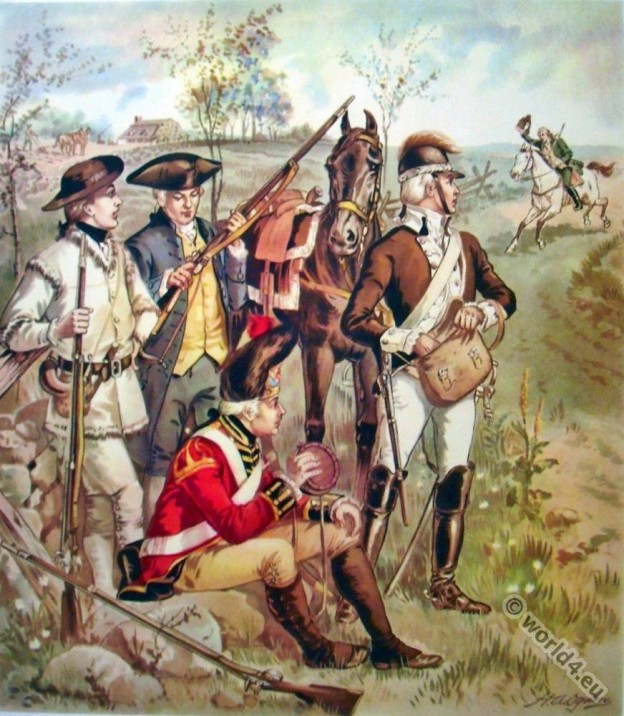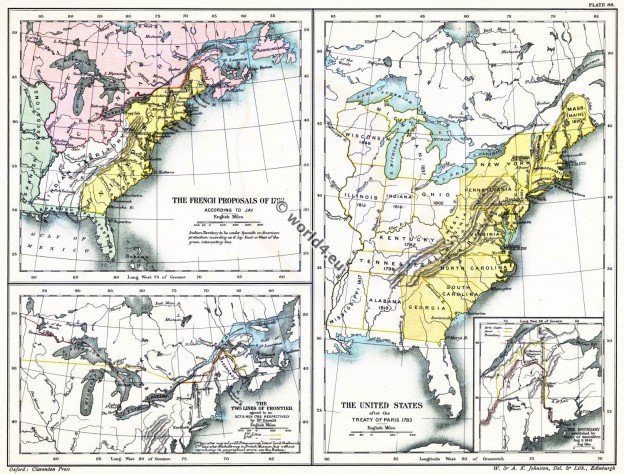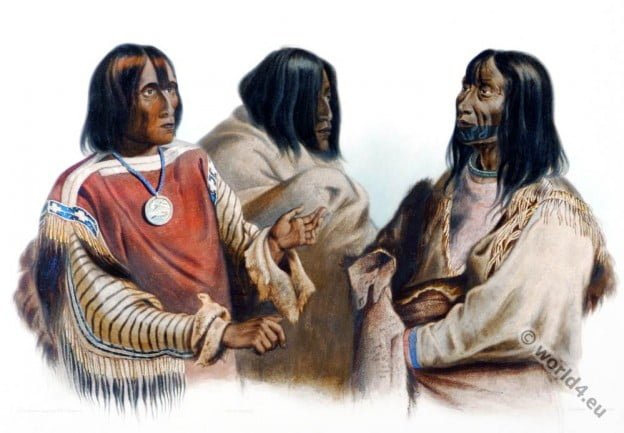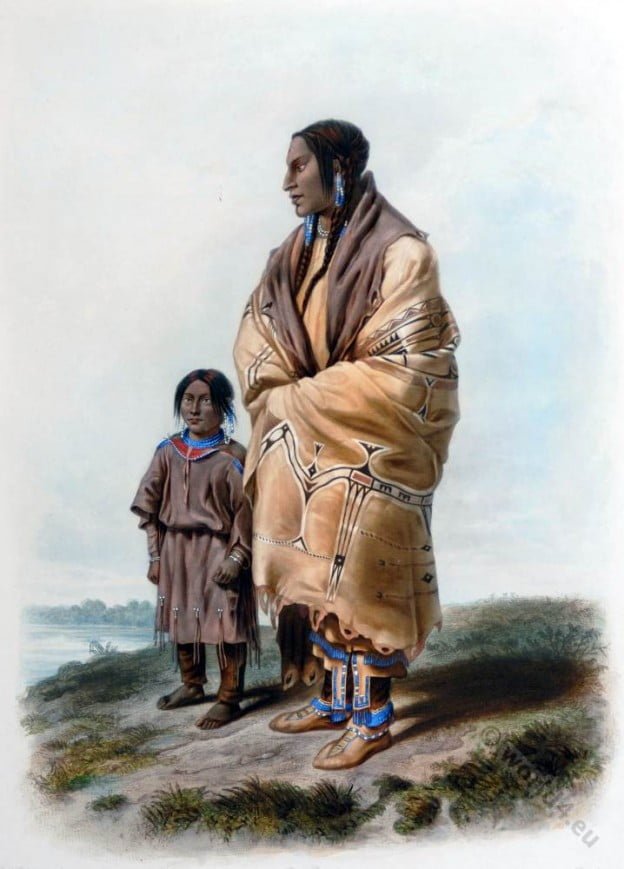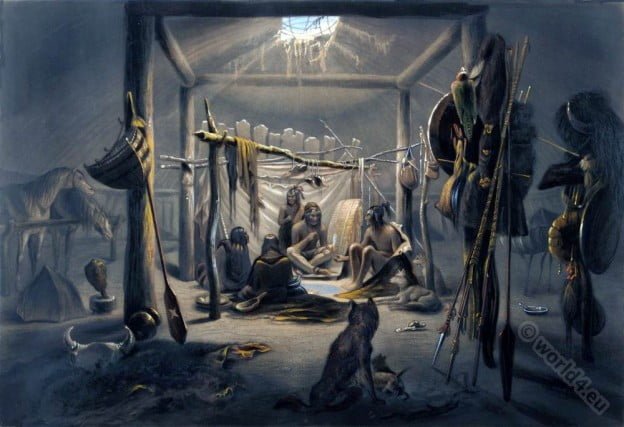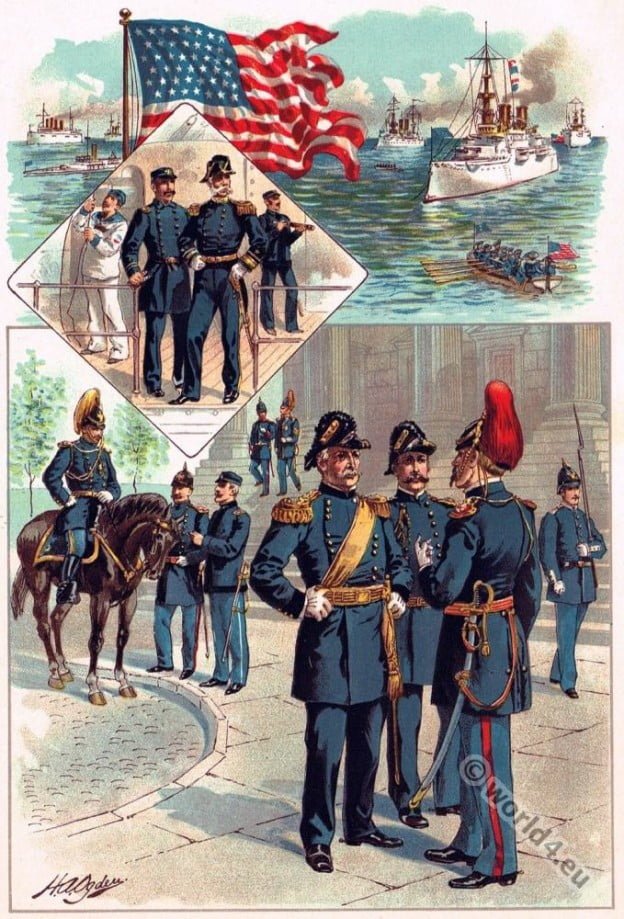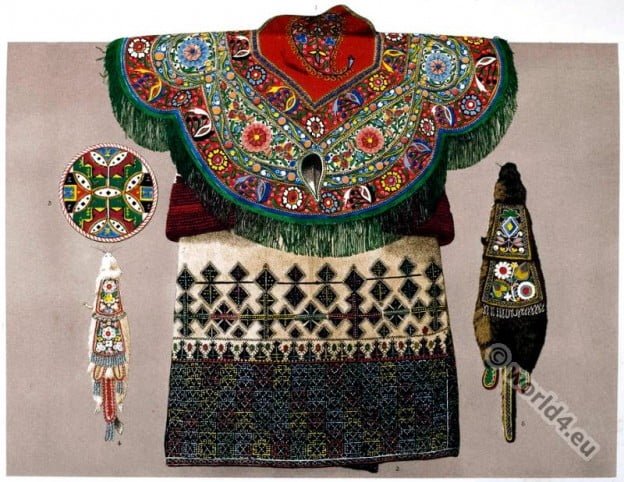Inhabitants of North West America.
Category: North America
North America costume
A Skirmish in the Philippines. American soldiers 1899.
U.S Army soldiers during the Philippine–American War between 1899 and 1902.
Uniforms of Independent Company Organizations.
Uniforms of Independent Company Organizations. American Revolutionary War. Uniforms of the United States Army 1774 to 1889 by Henry Alexander Ogden.
The United States of America after the Treaty of 1783.
The Treaty of Paris, which was signed on September 3, 1783 formally ended the American Revolutionary War between the Kingdom of Great Britain and the Thirteen Colonies in North America, who had fought against British rule since 1775.
Blackfeet tribes. Chief of the Blood Indians. War chief of the Piekann.
Blackfeet tribes. Chief of the Blood Indians. War chief of the Piekann, Koutani Indian.
Battle between Assiniboine warriors and Blackfeet. Fort McKenzie.
Battle between Assiniboine warriors and Blackfeet in front of Fort McKenzie on the Upper Missouri River, 1833.
Dakota woman and Assiniboin girl. Tribal group of the Sioux.
The Dakota or Dakhóta (often Santee or Eastern Dakota) are the eastern dialect and tribal group of the Sioux from the Sioux language family.
Numahkahke people. The Interior of the hut of a Mandan Chief.
The Mandan are a small, originally semi-nomadic Indian people of North America from the Sioux language family who lived along the Missouri River.
United States Army and Navy uniforms in 1889.
United States Army and Navy uniforms in 1889.
Embroidery from the Caucasus, Greece, Indian Melicete tribe.
FROM among the few but remarkable specimens of art-work man ship contributed to the Exhibition by the Caucasian Agricultural Society of Tiflis, we have selected a saddle-cloth from Kabardah, a district to the east of Mount Elbruz, the highest summit of the great Caucasian mountain-range. Circassian embroidered Saddle-Cloth. Embroidered dress, Greece. Hand-work of the North-American Indian Melicete tribe. International exhibition, 1862.



